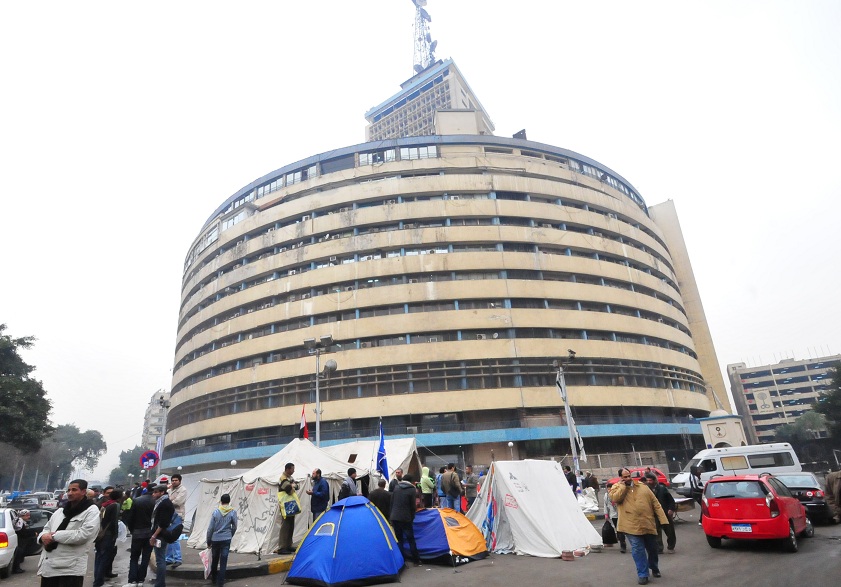On a small glass doorway in Mounira’s French Cultural Center hangs a poster with information on the exhibition “Home, a new show by young artist Ahmed Kamel. The enlarged, unframed photographs taped to the walls might indeed require information for a viewer lacking experience with contemporary art. Kamel is one of a host of Egyptian artists making work in conceptual genres that until now have remained without strong national precedent or sufficient venues. Kamel’s statement for “Home, presented only in French, relates the following: “The home and its interior possess fragments of personal history, the goals and aspirations of its inhabitants … It is a sort of marker for their social and cultural principles, a refuge and emphasis of identity.
Displayed on thin paper, the photos are the sort of raw snapshots en vogue in today’s postmodern art market. They lack immediate poetry and require contextualization. A good amount of them, particularly Kamel’s wide shots, are composed as the sort of photos used in real estate ads or furniture sales.
It is plausible that the young artist is still searching for an adequate visual language with which to express these markers of identity and culture. At this moment however, his works fall short of representing anything other than a sort of bland and faceless wealth or comfort.
In the majority of these photos, there is a sparsity of furniture and wall hangings that is certainly not typical of Egyptian homes. The rooms themselves not only fail to convey information on their geographic location, they also do not say much about the particularities of their inhabitants. Most of the furniture is either so new or so sparse that one could imagine that the artist has chosen to photograph unoccupied furnished apartments.
Despite Kamel’s purported “fascination with the domestic interiors of different people within different contexts; with only perhaps one exception, the expensively furnished rooms on view appear to be those of more or less the same sort of people, living within the same sort of context. Though there are small differences in taste, it is not difficult to imagine the families of these homes quite naturally visiting one another.
So as not to dismiss the work entirely, one can note that within the “sameness of the wide shot photos, Kamel has taken a few close-up works that belie a bit more creative interest. In these detailed images, he nears what one can only imagine is his metaphorical target. For example, there is a photo taken of a porcelain egg, standing on gold legs before an empty crystal candy dish. The egg has an image of a mosque painted on it, above which is written the holy word “Allah. The egg stands between two tea sets, the first of which is a tasteful antiquity, accented in gold, the second a more practical one, casually drenched in bright sunflowers.
One might chalk up this sort of vague, haphazard comment to the artists’ youth. It would be reading too far into the work to assert an intelligently veiled poetry or social commentary. The works, though perhaps conceptually strong, are weakly executed. If there was a good deal of foresight within them, it is lost to the viewer. Unfortunately also, they lack the wild allure of an unplanned series.
There is, however, promise in Kamel’s close ups. One photo bears an image of a set of wine glasses, before which stands a small statue of a bride and groom. In this instance, the bride’s head has fallen off and is improvisationally stationed on the groom’s shoulder. Among this sort of tongue in cheek wit, there is tenderness in another photo, a corner shot of a wall, where an intimate portrait of a young girl hangs. In another of the tea set portraits, a peacock sits on a flowering branch of glimmering porcelain.
Though perhaps not within this genre, the cups are the sort of sentimental sight with which people of a certain class and generation here in Cairo are familiar.
While it is not a mandate to have a class consciousness when creating works of art, artists should take care when they venture into post modern, conceptual territory armed with words like “identity and “social and cultural principals. Deconstruction, the concept upon which these movements were built, does not happen within the image alone. It is a multi-dimensional entity that spreads beyond the borders of the photographic frame – into spaces that underlie not only the motivations of the chosen subject, but the subjective position of the artist.
While Kamel is depicting the middle class for the middle class, one might refer him to a work recently on view at the Townhouse gallery, in the exhibit “Lapdogs of the Bourgeoisie. There, artist Chris Evans presented works of a similar nature – photographs of the interior of artists’ parents’ homes.
This simple conceptual twist illuminated the makings of artists – their surroundings, where they came from. In the case of “Home however, the subjects are not transparent. We only try to imagine the people that spring forth from its dwellings and the possibilities are too vast. Lacking are the intimate details in objects that indelibly link an individual to his home. All this appears to have been swept away for the photographs.

